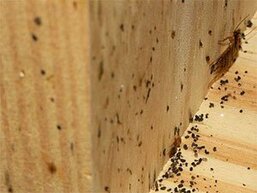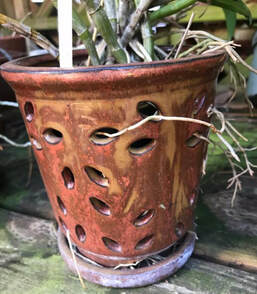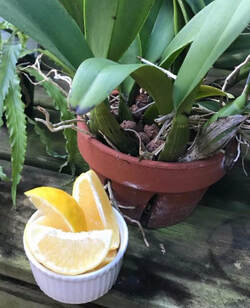|
An orchid’s blooming cycle can vary widely based on light, temperature, feeding and time of year. Although most orchids bloom just once a year, there are plenty of orchid varieties that can bloom twice a year and sometimes year-round. If you are an impatient gardener seeking prolific bloomers, here are a few varieties that you may want to try. 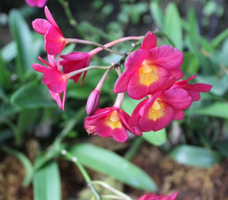 Guaritonia 'Why Not' Guaritonia 'Why Not' Guaritonia 'Why Not' This orchid boasts dark red blossoms with a bright yellow center. Flowers are approximately 1.5” across and bloom in clusters with anywhere between three to 12 flowers per cluster. A mature plant will bloom several times a year with it’s primary blooming cycle in the spring. They prefer warm temperatures, high moisture, well-drained potting media, bright light (but not direct light) and regular feeding. They do well in pots, baskets or attached to wood. 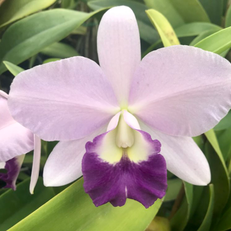 Cattlianthe 'Busy Bev' Cattlianthe 'Busy Bev' Cattlianthe 'Busy Bev' This regal looking hybrid boasts large flowers that are four to five inches in size. The blooms feature an intense purple lip and the outer petals are lavender to even a light bluish hue. This plant provides an extra bonus with a sweet fragrance that can attract butterflies. We recommend growing this plant like a typical Cattleya with high humidity, a well drained potting media and bright indirect light. The Blue Jewel typically blooms in the spring time, but with the right conditions it will bloom again later in the year. 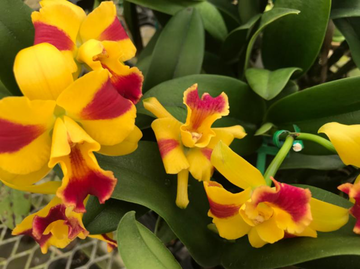 Rhycattleanthe 'Burana Beauty' Rhycattleanthe 'Burana Beauty' Rhycattleanthe Burana Beauty The Cattleya hybrid, Burana Beauty, looks like happiness tie-dyed onto a flower. The blooms feature distinctive red stripes on the ruffled center two petals and lip which is contrasted against bright, sunny yellow outer petals. Burana Beauty will put out sprays with four to five blossoms per bunch and will bloom two to three times per year. This orchid grows well indoors with bright light in addition to outdoors in tropical zones. The Burana Beauty prefers a fir bark potting mixture. As if you needed one more reason to add this plant to your collection, the Burana Beauty features a delightful citrus scent. 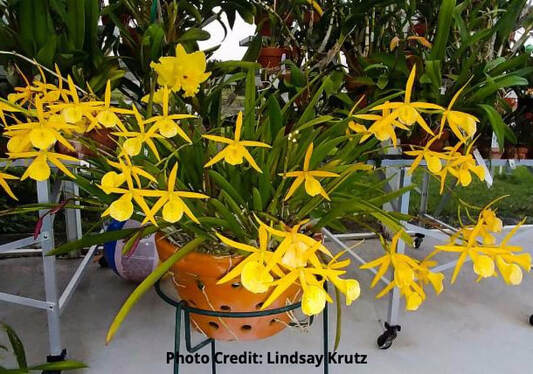 Brassocattleya Yellow Bird A hearty plant due to its Brassavola parent cross, this orchid is great for beginners. The long, skinny leaves resemble conifer needles and are a nice balance to the delicate yellow flowers that resemble a star with a big, pouty, freckled lip. Flowers will last a few weeks at a time and open as a light pink and darken to a bright yellow within days. They grow well in baskets, pots and mounted to wood. Under the right conditions, a Yellow Bird can bloom throughout the year, and it emits a sweet scent. Special thanks to L. Krutz for sharing this photo of her Yellow Bird. Keep an eye out for these beauties at your local garden center.
Happy (Year-Round) Blooming from Better-Gro! Orchids provide the perfect environment for pests to live and thrive. Warm, humid air; plump, soft leaves; tender buds and blossoms; and plenty of crevices to hide under leaves and in potting media. If you aren't careful, a small bug infestation can quickly grow into a big and costly problem. Below are some photos and descriptions to help you identify what may be harming your plants as well some suggestions on how to get rid of pesky pests. 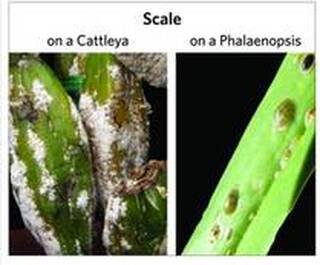 Scale Scale are piercing, sucking insects that are difficult to control as the reproducing females are covered by a protective shell that also protects the pest's eggs. Scale is often resistant to many pesticides due to their hard outer shell. 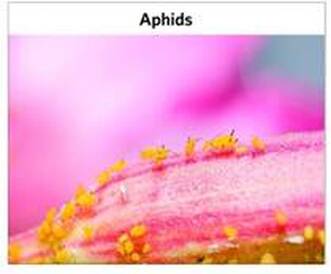 Aphids Aphids are small, soft-bodied insects that are generally pear-shaped and green or black in color. They reproduce rapidly and are most often seen on flower buds/spikes and new growth. They produce a sticky substance referred to as honeydew which can encourage the growth of a black fungus (sooty mold). If the leaves of your plants exhibit sooty mold, it's likely that you have an aphid infestation. 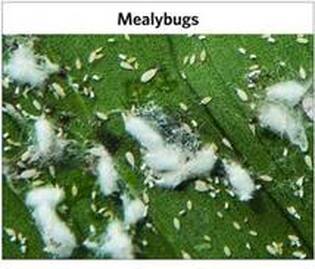 Mealybugs Sometimes confused with scale, mealybugs are a soft-bodied insect that are readily identified at the mature stage as white to greyish-white and cotton-like. They are often found in the same areas as scale and can do substantial damage if not dealt with immediately. Removal of Scale, Aphids and Mealybugs: Use a small toothbrush or cotton swab soaked in rubbing alcohol (known as isopropyl alcohol) to remove the pests. Do not use other forms of alcohol as they may damage your plants. Be sure to get into the crevices of the leaves as bugs tend to hide there. This treatment is a tedious process and must be repeated often. However, if you catch and treat the infestation early, it will save your plants. 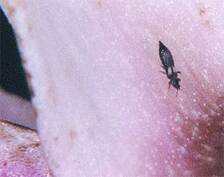 Thrips These are very small, elongated insects that are most prevalent on flowers and buds. Often times, their presence is not recognized until the damage from their feeding is obvious. These bugs suck the juice right out of your plants which can cause the deformation of buds, flowers, and new growth. You may also notice browning around the edges of your flowers. Removal To get rid of thrips, you will need to use a pesticide. Your plants should be inspected weekly, and the pesticide should be reapplied until the infestation has disappeared completely. 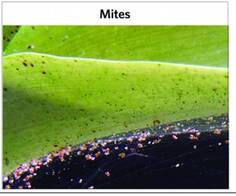 Mites Mites are microscopic arthropods that are related to ticks. They attack the undersides of leaves. Their presence is often unnoticed until it's too late. They leave behind silvery, pitted, unsightly leaves. Removal It is important to note that mites are not insects. Most insecticides are not effective at killing mites. You must purchase a pesticide that is specifically labeled as a miticide for use against this pest. For small infestations in the home, wiping the infested areas with a cotton ball dipped in rubbing alcohol can also be effective. 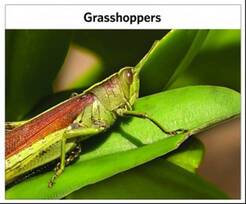 Grasshoppers Grasshoppers, especially Lubbers, can do significant damage to orchids in a very short period of time. Lubbers are usually 1” to 3” long and can vary in color from yellow to black depending on the species and stage of growth. Removal These are best controlled immediately by hand or pruners. 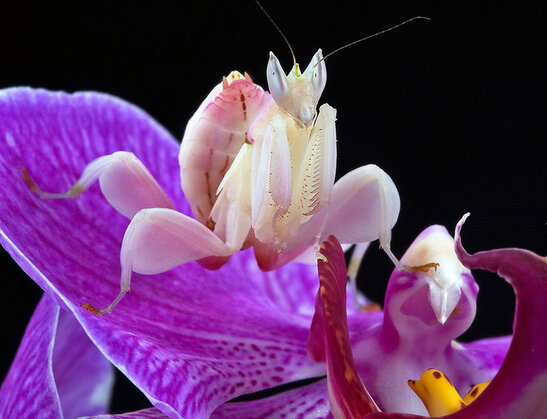 Photo Credit: NPR Photo Credit: NPR There are many different orchids that display a wide array of appearances within the Orchidaceae family. Some of the more exotic-looking orchids resemble animals. The monkey face orchid, flying duck orchid, hedgehog face orchid and bee orchid all bear a remarkable resemblance to the animals they’re named after. Mimicry isn’t a one-way street, though. While some orchids grow to look like animals, one insect matures to resemble orchids. Unless you look closely, you could even mistake the orchid mantis for a flower. Looking Like an Orchid
The orchid mantis is a species of praying mantis that models itself after a flower, specifically a pink orchid. Its scientific name is Hymenopus coronatus. The mantis is white with pink accents, which vary from soft to bright, and its legs have lobes that make them look like the petals of an orchid. Its size is even about that or an orchid flower, with females growing to be about 2.5 inches, and adult males measuring about 1 inch. Most impressive, the mantis can vary its color with certain environmental conditions, namely changes in light or temperature, so that it resembles not just an orchid in general but the specific orchids that it’s living near. Living Like an Orchid The orchid mantis doesn’t just look like an orchid, but, in many ways, it also lives like one. The insect is native to Malaysia, where plenty of orchid species (including pink ones) come from. In Malaysia, the mantis is found in bushes and on trees -- the same places where epiphytic orchids grow. (Epiphytes are plants that grow harmlessly on other plants.) The mantis even likes the same weather as orchids, preferring daytime temperatures between 77 and 95° F, and needing nighttime temperatures to be at least 64° F. It also requires high humidity levels, ideally a relative humidity between 60 and 70 percent. Staying Safe While Hunting Insects By resembling an orchid and living in the same places where an orchid would, the orchid mantis is able to hide from predators and hunt its prey. Birds will overlook the sizeable insect, mistaking it for a flower. Smaller insects will too, coming too close to the predator. The mantis will eat small butterflies, hoverflies, houseflies, crickets and other, similar insects, which are all attracted to the pink orchid the mantis resembles. Learning about orchids is a never-ending pursuit, and the field of study isn’t limited to the flowers themselves. To learn more about orchids, their relationships with insects and orchid care, visit EasyOrchidGrowing.com. Happy Blooming! 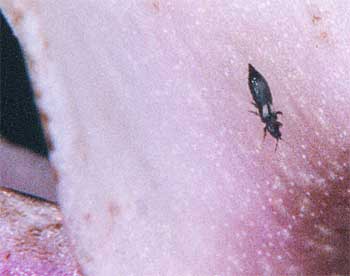 You’ve waited months and carefully nurtured your orchid. You protected your plant from the cold winter months and fertilized it with care. Like a proud parent, your excitement builds as the first spike begins to shoot out from the base of the plant. You pat yourself on the back when not just one bud forms, but multiple buds form along the spike. The anticipation builds only to end in disappointment as your tender buds shrivel before they reach maturity. Thrips: Tiny Pests Sadly, this misfortune can occur with first time orchid owners as well as experienced collectors. One likely culprit is a small insect called Thrips. Thrips commonly attack buds and new growth on many types of orchids including Vandas, Dendrobiums, Cattleyas, Phalaenopsis and Epidendrums. Almost impossible to see with the naked eye, these tiny hemi-metabolic insects range in size from 1/16 to 3/8 inch and are characteristically cigar-shaped. They also attack many other types of plants including edibles such as beans, carrots, squash and other flowering plants like gladioli and roses. Despite their tiny size, thrips can ruin your flowering season. Pest problems do occasionally occur with orchids. Correctly identifying the source of the problem is key to understanding how to treat your orchids and eliminate the pest. In this video, we’ll show you examples of insect problems with orchids and discuss how to remedy the most common problems. 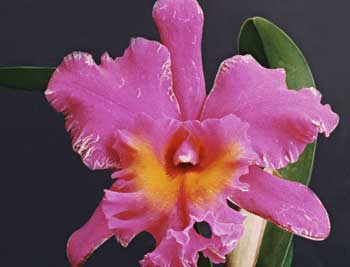 Symptoms Thrips commonly feed in large groups. Most often, they attack buds and new growth, sucking the moisture out of these fragile parts. Blooms may shrivel and drop before opening. Flowers that make it to maturity may be spotted, streaked, shriveled or discolored. If you suspect you have thrips, try gently blowing into an open flower and look for tiny green or white insects. Controlling Thrips It is important to address thrips quickly. Besides damaging your buds and new growth, they may also help spread viruses throughout your collection due to their ability to quickly travel between plants.
Hopefully these tips will keep thrips from ruining your current and future buds and flowers. Happy Blooming! 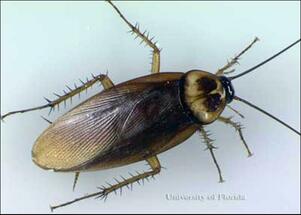 Photo: University of Florida Photo: University of Florida If our title makes you cringe, you’re not alone! Roaches rank up there as one of the most disgusting things you can find in your home. But did you know they will feed not only on the food in your pantry but munch on your orchids as well? Cockroaches have been around for over 300 million years. Some species pre-date the dinosaurs. So, it’s no surprise that these resilient insects will do anything to survive. Most areas of the U.S. are well into the frigid winter season. It’s dry and cold outside which is exactly why roaches head inside this time of year to seek food and water. Their preferred meal is any type of carbohydrate including green leaves and blossoms. In particular, they find new growth such as root tips and buds extra enticing.
|
Resources
|
Company |
|

